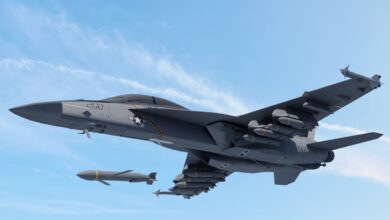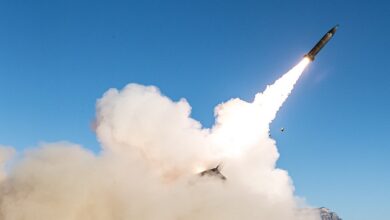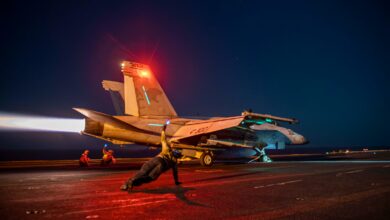
There is a dangerous trade-off between defense and deterrence over Taiwan. Spendthrift Western leaders think that deploying a token naval force to Asia to signal their commitment to defend Taiwan against Chinese invasion will stop war from happening.
For example, rather than deploying land forces in Taiwan or the Philippines, the US has transited the Taiwan Strait over 118 times since 2007.
Allied fleets have joined the US, including Australia, Canada, France, and the UK. Most of the multinational force has explicitly declared that they intend to stabilize East Asia.
However, the problem is that efforts committed to deterrence, which is the threat to inflict punishment on an attacker, are temptingly fatal to the more important effort of preparing for the defense.
This is the technique of gunboat diplomacy, which is inexpensive as fleets may be quickly and cost-effectively redeployed.
Conditions of Deterrence
Deterrence has three necessary conditions: it must have enough capability, be credible in the sense that parties will indeed fight if an attack occurs, and the punishment must be communicated. It’s not the same as defense.
Chinese President Xi Jinping’s recent public promises of peaceful unification with Taiwan signal that Beijing believes the West will eventually rise to defend Taiwan, and so the credibility and communications conditions are satisfied, despite the legal ambiguity of US guarantees to Taiwan’s defense.

When an attacker knows that it will be opposed, it begins preparations for a fait accompli, or in this case, a quick invasion of Taiwan designed to be over within two months, which is the likely delay a Chinese fleet can impose on the first wave of a Western counter-invasion force.
Deterrence During Previous Wars
In fact, it took the US and its allies five months to deploy during Operation Desert Shield in 1990-1991 against Iraq, which could not oppose the buildup. Under these new conditions, gunboat diplomacy becomes a critical, expensive distraction from defense.
During the Second World War, in a desperate attempt to secure a deterrent against a Japanese attack against Singapore, the UK dispatched two major warships.
The US’ deterrent effort consisted of redeploying its Pacific Fleet from California to Pearl Harbor in May 1940 and stationing 23,000 US military personnel in the Philippines. This greatly exaggerated the speed with which the US would be able to marshal its fleet to the Philippines, break the Japanese attack there, and proceed to Japan for a decisive showdown.
Instead, within 48 hours of the outbreak of war, the UK’s warships had been sunk, 120,000 Commonwealth soldiers in Singapore surrendered within three months, and US soldiers in the Philippines surrendered within five months.
These deployments were wasteful attempts at deterrent by peacetime politicians seeking cheap posturing, ultimately undermining defense.
The Battle
If China makes a lunge for Taiwan, the US will repeat the same flawed strategy of concentrating a fleet for a decisive engagement as War Plan Orange during the Second World War, which will take months.
Fearing the severe losses of a hasty landing of heavy ground forces at the east coast Taiwanese ports of Taitung or Toucheng, the US will delay intervention, much as it recalled the Pensacola Convoy, which could have saved the US garrison in the Philippines in 1942.
Taiwan will be lost.
Deterrence in Taiwan Strait
The most apparent tactical problem with deterrence in the Taiwan Strait is that aircraft carriers fleets are designed for invisible operations in the open seas, where their aircraft can overwhelm enemy fleets and small island bases. Aircraft carriers are vulnerable and will be summarily sunk if deployed off the Chinese coast or within several hundred nautical miles of Taiwan.
Land-based aircraft in China are more cheaply operated and have greater range, payloads, and sensor support than any sea-based aircraft. For these carriers to be safe from the Chinese DF-21D anti-ship missile will require a dangerously escalatory measure of removing all of China’s satellites from orbit.

NATO’s last war against a peer competitor similar to China was Serbia in 1999 (population 7 million, not 1.4 billion), which managed to harness 1970s sensor technology to shoot down an F-117 stealth bomber.
The West no longer has a decisive technological advantage over China and will eventually have to lean back on a dangerous threat of tactical nuclear escalation to maintain the balance.
Tactical nuclear war at sea is much more escalatory than on land because it is tempting to use nuclear depth charges against enemy submarines in a place inhabited by fish rather than towns, and then mission creep will push these attacks onto coastal air bases, ports, and deeper land targets.
Defeating a Chinese invasion of Taiwan, and therefore deterring it, is actually relatively easy and inexpensive, given the application of three measures, leavened with a heavy dose of political will.
Deploying Troops and Air Cover
First, Western states need to make the bold statement, as they did with the defense of West Berlin and the UN commitment to South Korea during the Cold War, to deploy army troops and air cover to Taiwan.
Such a move would need to be coordinated, as weak deployment is likely to trigger a Chinese equivalent of the 1962 Cuban Missile Crisis, involving an attempted blockade, aerial overflights, and threats of nuclear war.
This deployment does not necessarily need an immediate recognition of Taiwan, though it may evolve towards it. Much like NATO’s current deployment to the Baltic to deter Russian harassment, a land deployment among friendly Taiwanese will remove any Chinese incentive for a desperate surprise attack.
A single US division (like the 2nd US Infantry Division deployed in South Korea), plus a brigade each from Japan, Australia, the UK, and Canada would make any amphibious landing infeasible given projected Chinese force structures for the next 10 years, barring a major Chinese buildup that could then be easily matched.
A US Division and two Air Wings of approximately 100 aircraft will cost the same as two US aircraft carriers and be far less vulnerable while providing far greater defensive punch. All of this would be much cheaper than war: the Korean War cost the US 15 percent of its GDP in each of its three years.
Engaging Taiwan
The main obstacle is not China, nor even the West, but the Taiwanese themselves. The Taiwanese government and people have a strong preference against antagonizing Beijing because of their commercial dependence on trade with China. Therefore, they deemphasize military defense instead of deterrence based on the likelihood of Western intervention.

Taipei’s preference is to keep options open for a crisis de-escalation. This is a serious issue of free-riding, but no more intractable than negotiating with West Germany over its defense during the Cold War. This means engaging more actively with Taipei as a second measure.
Useful Naval Base
The third measure is diplomatic, and to secure the in-depth air and naval bases necessary to operate a supply chain to Taiwan, as well as to administer a cost-effective blockade of Chinese commerce in the event of war, without the need for vulnerable aircraft carriers.
US Naval Strategist Alfred Thayer Mahan defined a useful naval base as one which frees up more resources than it consumes in its defense. The US Marine Corps and air base in Okinawa, located off the coast of Shanghai, is not a useful base as it will be vulnerable to isolation by the Chinese navy.
The key airbase locations that would significantly enhance Taiwan’s defensibility are northern Luzon in the Philippines, Natuna Island in Indonesia, and an air force complex on Japan’s Fukuoka Island.
This effort will receive pushback from selective members of the Association of Southeast Asian Nations and require a complex effort of engagement and compromise with the democratic regimes of the region.
Deploying for Solid Deterrence
Joint recognition of Taiwan by the major powers will impair China’s selective application of retaliatory sanctions, which it currently uses to play democratic allies off against one another.
Immediate deployment of US and allied battalion-sized garrisons to Taiwan will alert Beijing to the futility of intervention, while China’s amphibious forces are not yet capable.
The subsequent deployment of permanent democratic brigades, and divisional prepositioned equipment and supplies, would enable Taiwan to resist being overwhelmed for months.
A network of airbases on the Philippine islands of Luzon and Leyte, protected by Philippine troops, would create an air bridge that would deny China air supremacy — and therefore the conditions for a safe amphibious attack.
 Dr. Julian Spencer-Churchill is associate professor of international relations at Concordia University, author of Militarization and War (2007) and Strategic Nuclear Sharing (2014), and former Operations Officer, 3 Field Engineer Regiment. He has published extensively on South Asia, conducting research in Pakistan for over 10 years.
Dr. Julian Spencer-Churchill is associate professor of international relations at Concordia University, author of Militarization and War (2007) and Strategic Nuclear Sharing (2014), and former Operations Officer, 3 Field Engineer Regiment. He has published extensively on South Asia, conducting research in Pakistan for over 10 years.
The views and opinions expressed here are those of the author and do not necessarily reflect the editorial position of The Defense Post.
The Defense Post aims to publish a wide range of high-quality opinion and analysis from a diverse array of people – do you want to send us yours? Click here to submit an op-ed.











